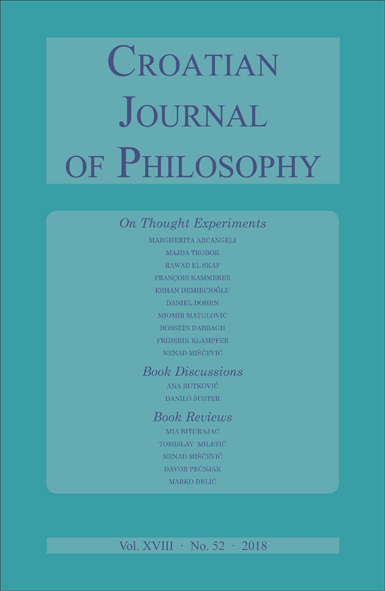The Function and Limit of Galileo’s Falling Bodies Thought Experiment: Absolute Weight, Specific Weight and the Medium’s Resistance
The Function and Limit of Galileo’s Falling Bodies Thought Experiment: Absolute Weight, Specific Weight and the Medium’s Resistance
Author(s): Rawad El SkafSubject(s): Epistemology, Philosophy of Mind, Philosophy of Science, 16th Century, 17th Century
Published by: KruZak
Keywords: Scientific thought experiments; Galileo’s falling bodies; De Motu (1590) and Discorsi (1638); eliminating causal factors; absolute and specific weights; medium’s resistance;
Summary/Abstract: The ongoing epistemological debate on scientific thought experiments (TEs) revolves, in part, around the now famous Galileo’s falling bodies TE and how it could justify its conclusions. In this paper, I argue that the TE’s function is misrepresented in this a-historical debate. I retrace the history of this TE and show that it constituted the first step in two general “argumentative strategies”, excogitated by Galileo to defend two different theories of free-fall, in 1590’s and then in the 1638. I analyse both argumentative strategies and argue that their function was to eliminate potential causal factors: the TE serving to eliminate absolute weight as a causal factor, while the subsequent arguments served to explore the effect of specific weight, with conflicting conclusions in 1590 and 1638. I will argue thorough the paper that the TE is best grasped when we analyse Galileo’s restriction, in the TE’s scenario and conclusion, to bodies of the same material or specific weight. Finally, I will draw out two implications for the debate on TEs.
Journal: Croatian Journal of Philosophy
- Issue Year: XVIII/2018
- Issue No: 52
- Page Range: 37-58
- Page Count: 22
- Language: English
- Content File-PDF

